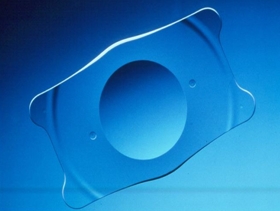
 Corneal refractive surgery to correct myopia, hyperopia and astigmatism has evolved considerably in recent years due to improvements in the excimer laser technology, femtosecond laser platforms, as in the surgical procedure. For example SMILE technology has been introduced revolutionizing the field of corneal refractive surgery, procedure in which unlike the LASIK corneal flap is not necessary. Due to SMILE procedure is less invasive, it allows faster visual recovery, does not alter corneal nerves or biomechanics among other advantages. Nevertheless, there are situations in which corneal refractive surgery cannot be performed because corneal thickness is reduced, the patient has high refractive error, or exist some risk of postoperative complications. In such situations, posterior chamber phakic intraocular lenses are an alternative to improve vision in patients with high refractive errors. Precisely, Prof. Dr. Jorge Alió is one of the surgeons more experienced in clinical practice and academic teaching worldwide about posterior chamber phakic intraocular lenses.
Corneal refractive surgery to correct myopia, hyperopia and astigmatism has evolved considerably in recent years due to improvements in the excimer laser technology, femtosecond laser platforms, as in the surgical procedure. For example SMILE technology has been introduced revolutionizing the field of corneal refractive surgery, procedure in which unlike the LASIK corneal flap is not necessary. Due to SMILE procedure is less invasive, it allows faster visual recovery, does not alter corneal nerves or biomechanics among other advantages. Nevertheless, there are situations in which corneal refractive surgery cannot be performed because corneal thickness is reduced, the patient has high refractive error, or exist some risk of postoperative complications. In such situations, posterior chamber phakic intraocular lenses are an alternative to improve vision in patients with high refractive errors. Precisely, Prof. Dr. Jorge Alió is one of the surgeons more experienced in clinical practice and academic teaching worldwide about posterior chamber phakic intraocular lenses.
How is the procedure and which are the characteristics of posterior phakic chamber intraocular lenses?
Posterior chamber phakic intraocular lenses have a very small size and are biocompatible with the structures of the eyeball. They are implanted through a small incision in front of the crystalline lens in patients under 45 years of age without presbyopia. Different diagnostic devices have to be performed preoperatively in consultation to know if the patients are suitable for the intervention. Specifically, corneal topography is required, as likewise to know the distances between the internal structures of the eyeball by means of various diagnostic devices as optical coherence tomography, or ocular biometry among others…
Currently, the posterior chamber phakic intraocular lens that is implanted worldwide for correcting high refractive errors is Visian ICL, in which Dr. Jorge Alió has one of the longest experiences internationally. Different improvements in Visian ICL design as the performance of multiple fenestrations that allow the flow of aqueous humor in order to regulate intraocular pressure, have been incorporated. More recently a new design with larger optical zone that allows that the intraocular lens can be implanted in patients with larger pupils without causing visual discomfort especially in night conditions, has been introduced. Precisely, Prof. Dr. Jorge Alió has taken part actively in various scientific congresses, which have exposed the advances in the surgical technique of posterior chamber phakic intraocular lenses. In addition, he has contributed with the publication of numerous scientific papers about the visual outcomes and stability of posterior chamber intraocular lenses. Recently he published a scientific article in the American Journal of Ophthalmology in collaboration with other professionals, in which the importance of study the optical quality in the phakic intraocular lenses by means of aberrometry was demonstrated. Due to the multitude studies realized, the team of Prof. Dr. Jorge Alió is the one that has made more publications in Spain and internationally about phakic intraocular lenses for the correction of high myopia. He has also published two books with two editions of posterior chamber phakic intraocular lenses, fact which highlights the high experience and professionalism achieved in this procedure. Also he stands out for his contribution in diverse developed innovations, which have benefited the visual health to many patients.
References of the author to consult
Alió JL, Peña-García P, Abdulla G F, Zein G, Abu-Mustafa SK. Comparison of iris-claw and posterior chamber collagen copolymer phakic intraocular lenses in keratoconus. J Cataract Refract Surg. 2014 Mar;40(3):383-94.
Alio JL, Peña-García P, Pachkoria K, Alio JL 2nd, El Aswad A. Intraocular optical quality of phakic intraocular lenses: comparison of angle-supported, iris-fixated, and posterior chamber lenses. Am J Ophthalmol. 2013 Oct;156(4):789-99.
Alió JL, Rodríguez-Prats JL. Buscando la excelencia en la cirugía de la catarata. Barcelona: Editorial Glosa SL, 2006.
Alió JL, Toffaha BT. Refractive surgery with phakic intraocular lenses: an update. Int Ophthalmol Clin. 2013 Winter;53(1):91-110.
Alió JL, Toffaha BT, Laria C, Piñero DP. Phakic intraocular lens implantation for treatment of anisometropia and amblyopia in children: 5-year follow-up. J Refract Surg. 2011 Jul;27(7):494-501.
